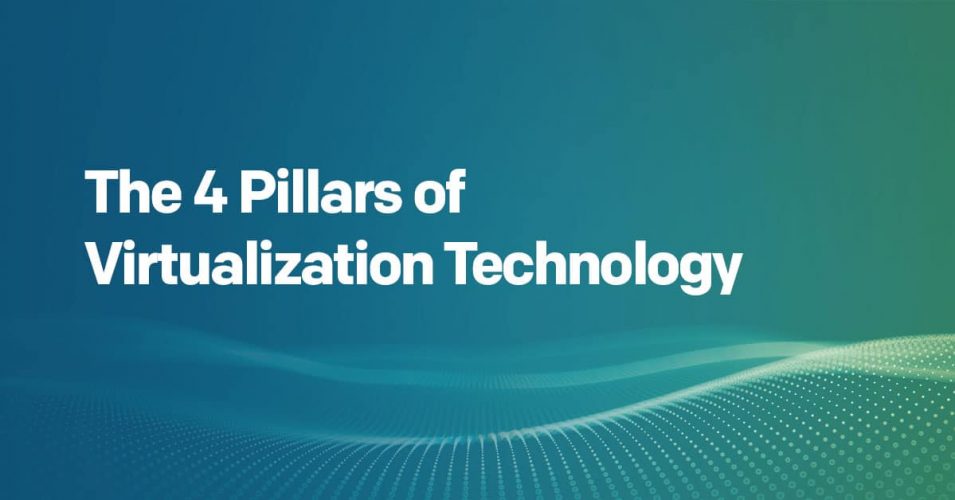READ TIME: 3 MIN

The 4 Pillars of Virtualization Technology
Virtualization technology has been a standard of practice in the IT industry for nearly two decades, but has evolved since it’s general inception. Virtualization is the creation of a virtual, software-based version of networks, servers, applications, storage, operating systems, etc… As virtualization advances, this list continues to expand.
Traditionally an enterprise play, virtualization is now considered the most effective way to reduce IT expense, boost efficiency and agility for small and mid-sized business markets. Simplistically, virtualization will minimize your hardware footprint and optimize your applications that need a dedicated operating system.
Here are a few of the ways virtualization technology continues to raise the bar in providing business benefits.
1. Flexibility of your technology
Virtualization takes multiple systems running independently on dedicated hardware to one connected software-based environment. “Virtual machines” operate in a single physical environment while running the same applications but with more flexible capabilities. This also creates the ability to expand and share resources depending on the workload within that physical environment. The virtual environment provides agility that can also significantly decrease the time it takes your IT team to deploy changes to the systems.
What does this mean for your business? As we know, time is money, and having your critical software immediately accessible and running more efficiently can dramatically affect the year-end bottom line.
2. Network virtualization
Network virtualization is a way to optimize your network for speed, flexibility and scalability. It increases security and reliability through combining resources in a shared network – parsing bandwidth, each with the ability to be assigned (and reassigned) to devices and servers and giving all users access to all resources.
What does this mean for your business? By creating an environment that is responsive to change in real-time, administrator tasks become more automated and the system can effectively handle unforeseen surges in usage without productivity issues.
3. Server virtualization and hardware consolidation
Inserting multiple virtual instances of servers into one physical server can increase efficiencies by utilizing capacity and minimizing your hardware footprint. In the world of computing, for a business that manages 20 servers, incurred costs are related to energy consumption for cooling, space to house the servers and equipment necessary to fully operate the hardware and IT support for monitoring and maintenance.
What does this mean for your business? Scaling down the number of physical servers running the same applications and operating systems will produce a dramatic reduction in long term IT hardware costs.
4. Isolating applications
Isolating applications is a way to solve issues of application incompatibility. You may have experienced this when trying to run two versions of an application at the same time on the same device. Through virtualization, each operating environment will have its own registry entries, code libraries, etc. So, application incompatibilities are a thing of the past within the virtual environment.
What does this mean for your business? Isolated environment capabilities can mitigate the risk of failures and corruption in one environment affecting other applications or data. For some, this is the primary reason for virtualization.
NexusTek’s expert staff has years of experience migrating, implementing and maintaining virtual environments. If this is the year you are looking to widen your profit margin by tighten up any technology gaps with a virtualization project, NexusTek can help.
Connect with NexusTek today to strategize on your current and future technology objectives.






